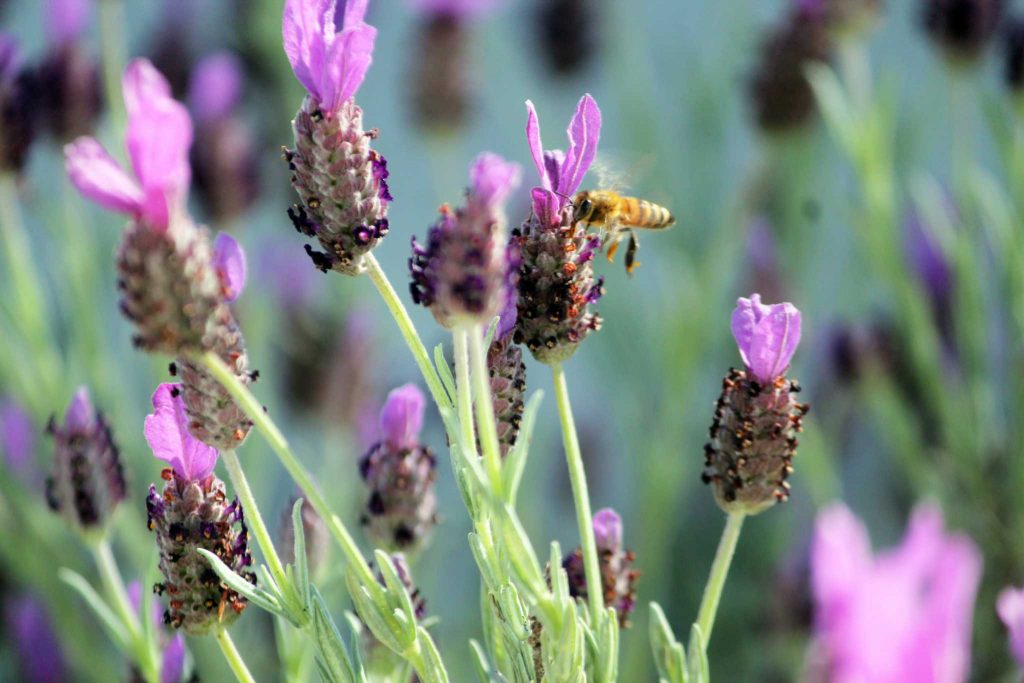On one of his early morning walks to his campus office, professor John Hafernik gazed down and stumbled upon something perplexing – a small discovery that would lead to one of the most important and recognized scientific projects of his entire career.
Hafernik saw a group of bees walking in circles and acting disoriented on the sidewalk, a phenomenon he had never witnessed before.
At first, Hafernik believed he had merely found a few honeybees that were acting erratically, but he soon discovered something far more complex and troubling was going on.
He deduced that the bees were infected by the parasitic larvae of the phorid fly, which caused them to behave like insect zombies.
The female flies, also known as Apocephalus borealis, inject their eggs into the bee, where the larvae begin to grow, making their way up the thorax until they violently erupt from the bee’s body, killing it in the process.
Shortly after the discovery, Hafernik began building a team of scientists to assist him with his research, and asked graduate student Chris Quock to help on the “zombie bee” project shortly after its inception in 2008.
“I think (John) takes a lot of pride in his work,” Quock said. “Since the discovery, it’s been a very personal thing for him.”
Hafernik’s team soon realized they would need to utilize a technique called “citizen science” in order to fully explore the phenomenon.
“(Citizen science) is a loose term for when members of science ask the community to help conduct research,” Quock said. “It’s like teamwork on a much larger scale.”
They started getting reports from citizens of bees emerging at night and being drawn to light sources, which is highly unusual behavior for them. Hafernik had never heard of bees acting like this before, but he soon found evidence to support these claims right on SF State’s campus.
“I walked outside and looked up into one of the light fixtures and it was crammed full of bees,” Hafernik said. “That meant that these bees were actually coming there at night, which is a time when bees shouldn’t be flying, and they were acting like zombies.”

The next step for the team was to find out how many bees were affected in the surrounding area.
“Another student sampled hives all throughout the Bay Area to see how widespread it was here and found that about 77 percent of the hives were infected, which is virtually all of them,” Hafernik said.
They finally published their findings in 2012, and were met with a huge response from both the scientific community and the public, including their colleagues at SF State.
“I know about his work from his public seminars and the publicity he’s generated in the scientific community,” said Zachary Hui-He, a professor of biology for 18 years at SF State and executive editor for Molecular Plant, a scientific journal serving the plant science community.
Though Hui-He is not an entomologist himself, he understands the potential significance his coworker’s research could have for the honeybee ecosystem.
“This could have a significant impact on the bee population,” Hui-He said. “It could help us to change policy and protect the bees.”
One of the questions Hafernik and his team are still trying to figure out is what kind of impact this phenomenon is having on the bee population as a whole.
“If it’s affecting a high percentage of bees in a hive, it could remove a lot of the worker bees,” Hafernik said. “If you don’t have enough workers, the hive could fail.”
According to Hafernik, the biggest concern is hive failure. However, there is still limited information on the number of bees in a given hive that are affected, making it difficult to determine how detrimental this issue truly is for the bee population.
Though much of the research has already been completed, Hafernik believes there is still more to discover about the “zombie bees,” and more people who need to be made aware of the problem’s existence.
Hafernik intends to retire within the year, but hasn’t minimized his participation in the project, and plans to continue the research into the foreseeable future.
“I’m going out to Washington D.C. next month to the U.S. Science and Engineering Festival to promote this and maybe see a few congressmen,” Hafernik said.
Ultimately, however, Hafernik believes continued support and involvement from the community is one of the most vital components in keeping this research alive. The project’s website provides detailed information and allows anyone to join the hunt for infected hives across the U.S.
“I think this is an example of a kind of project that the average citizen can get involved in and actually make a difference in terms of collecting real scientific data for something that is potentially quite important,” Hafernik said.







